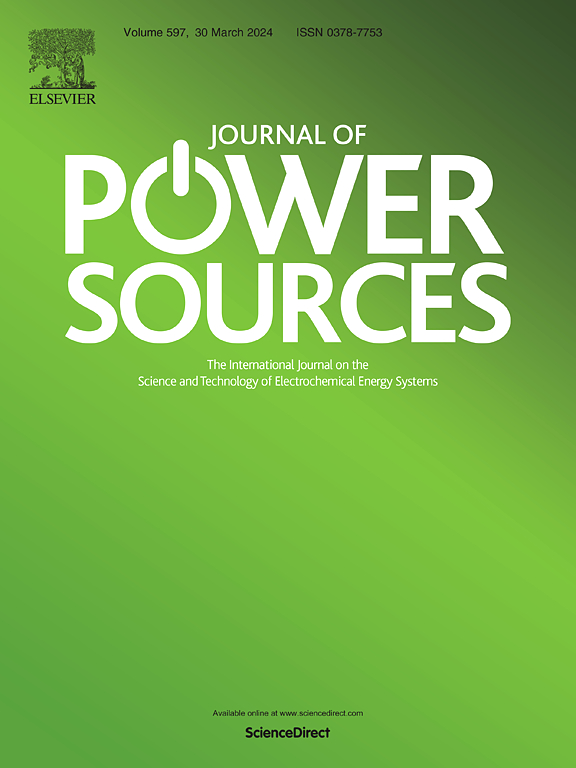Advances in inorganic anode materials and progress in sodium-ion batteries: a comprehensive review
IF 7.9
2区 工程技术
Q1 CHEMISTRY, PHYSICAL
引用次数: 0
Abstract
The intermittent nature of renewable energy sources, like solar, wind etc., require efficient and reliable electrical energy storage devices. Currently, the search for a substitute for Lithium-Ion Batteries (LIBs) has been ongoing due to the high-cost, restricted supply, and safety concerns. Since Na is more plentiful, less expensive and safer than Li, Sodium-Ion Batteries (SIBs) have been proposed as a LIB substitute, in applications where weight and size of batteries are less important. Among the components of rechargeable batteries, anode is the most important, which has maximum impact on the performance of the battery. Poor life cycle and lower energy density of SIBs are attributed to heavier and larger Na+-ions compared to Li+-ions. Numerous attempts have been undertaken to enhance the electrochemical performance of SIBs with various anode materials. In this paper, we present a comprehensive review of inorganic anode materials for SIBs. Based on the mechanism for charge storage, the paper is divided in to i) intercalation, ii) conversion/conversion-intercalation, iii) alloying and iv) adsorption/redox (MOF) based anode materials. These sections are subdivided in subsections on specific anode materials. A mini-section on full cell SIB studies has been included. Finally, a brief summary of the review and future suggestions on research directions consisting of innovations on the existing materials, innovative new materials and advanced characterization techniques as well as theoretical calculations to understand the charge storage and anode degradation on repeated cycling in more detail, are discussed.
无机负极材料研究进展及钠离子电池研究进展综述
可再生能源的间歇性,如太阳能、风能等,需要高效可靠的电能存储设备。目前,由于锂离子电池(LIBs)的高成本、供应受限以及安全问题,寻找其替代品的工作一直在进行中。由于钠比锂更丰富、更便宜、更安全,在电池重量和尺寸不太重要的应用中,钠离子电池(sib)被提议作为锂离子电池的替代品。在可充电电池的各个组成部分中,阳极最为重要,对电池的性能影响最大。与Li+离子相比,Na+离子更重、更大,导致sib的生命周期差、能量密度低。为了提高sib在不同阳极材料下的电化学性能,已经进行了许多尝试。本文对sib用无机负极材料的研究进展进行了综述。根据电荷存储机理,本文分为i)插层,ii)转换/转换插层,iii)合金化和iv)吸附/氧化还原(MOF)基负极材料。这些部分在特定阳极材料的子节中被细分。关于全细胞SIB研究的迷你部分已包括在内。最后,简要总结了研究进展和未来的研究方向,包括现有材料的创新、创新的新材料和先进的表征技术,以及更详细地理解重复循环过程中电荷存储和阳极降解的理论计算。
本文章由计算机程序翻译,如有差异,请以英文原文为准。
求助全文
约1分钟内获得全文
求助全文
来源期刊

Journal of Power Sources
工程技术-电化学
CiteScore
16.40
自引率
6.50%
发文量
1249
审稿时长
36 days
期刊介绍:
The Journal of Power Sources is a publication catering to researchers and technologists interested in various aspects of the science, technology, and applications of electrochemical power sources. It covers original research and reviews on primary and secondary batteries, fuel cells, supercapacitors, and photo-electrochemical cells.
Topics considered include the research, development and applications of nanomaterials and novel componentry for these devices. Examples of applications of these electrochemical power sources include:
• Portable electronics
• Electric and Hybrid Electric Vehicles
• Uninterruptible Power Supply (UPS) systems
• Storage of renewable energy
• Satellites and deep space probes
• Boats and ships, drones and aircrafts
• Wearable energy storage systems
 求助内容:
求助内容: 应助结果提醒方式:
应助结果提醒方式:


